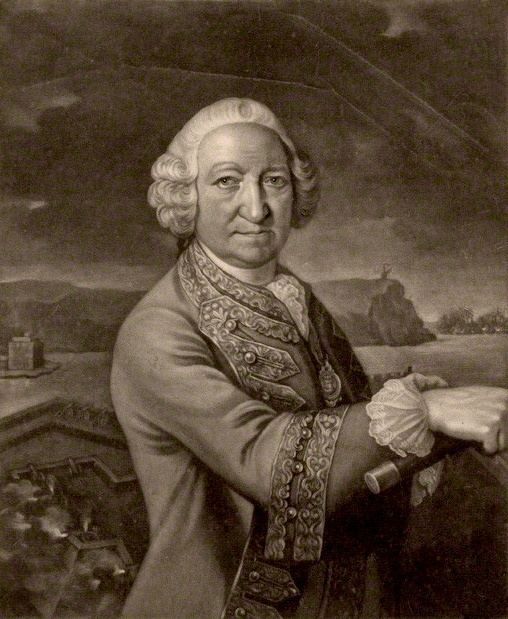Name William 1st | Died September 10, 1761 | |
 | ||
People also search for John Byng, Roland-Michel Barrin de La Galissoniere, Armand de Vignerot du Plessis | ||
Lieutenant-General William Blakeney, 1st Baron Blakeney KB (1671/1672 – 10 September 1761) was an Irish soldier known for his unsuccessful defence of the Spanish island of Menorca following the Battle of Menorca in 1756.
Contents
Early life
Blakeney was born at Mount Blakeney, County Limerick, to William Blakeley (MP) in the Irish House of Commons for Kilmallock, and Elizabeth (née Bowerman).
Destined for politics, he showed a decided preference for a military career. At age 18, he headed the tenants in defending the Blakeney estate against the Rapparees. As a volunteer he fought the war in Flanders, and at the Siege of Venlo in 1702 won his commission. He served as a subaltern throughout Marlborough's campaigns, and is said to have been the first to drill troops by signal of drum or colour. Between 1725 and 1757, he represented Kilmallock in the Irish House of Commons.
For many years after the peace of Utrecht he served unnoticed, and was 65 years of age before he became a colonel. This neglect, which was said to be due to the hostility of Lord Verney, ceased when the Duke of Richmond was appointed colonel of Blakeney's regiment, and thenceforward his advance was rapid. Brigadier-general in the Cartagena expedition of 1741, and major-general a little later, he distinguished himself by his gallant and successful defence of Stirling Castle against the Highlanders in 1745. Two years later George II made him lieutenant-general and lieutenant-governor of Menorca.
Fall of Menorca
The governor of that island never set foot in it, and Blakeney was left in command for ten years. In 1756 the Seven Years' War was preluded by a swift descent of the French on Menorca. Fifteen thousand troops under marshal the duc de Richelieu, escorted by a strong squadron under the marquis de la Gallisonnière, landed on the island on 18 April, and at once began the siege, where Blakeney commanded at most some 5,000 soldiers and workmen.
The defence, in spite of crumbling walls and rotted gun platforms, had already lasted a month when a weak, undersupplied British fleet under Vice-admiral John Byng appeared. La Gallisonnière and Byng fought, on 20 May, an indecisive battle. Byng left Blakeney to his fate after his fleet lost over 400 men. Byng sailed for the nearest port repair facilities in the Mediterranean, that being Gibraltar, where he hoped to repair his fleet for a return.
A second expedition subsequently appeared off Menorca, but it was then too late, for after a heroic resistance of seventy-one days the old general had been compelled to surrender the fort to Richelieu (18 April – 28 June 1756). Only the ruined fortifications were the prize of the victors. Blakeney and his little garrison were transported to Gibraltar, with absolute liberty to serve again. Byng was tried and executed; Blakeney, on his return to England, found himself the hero of the nation.
Later life
He was made a colonel of the 27th (Inniskilling) Regiment of Foot, a Knight Companion of the Bath, and Baron Blakeney in the Irish peerage. Later, John Van Nost the Younger's statue of him was erected in Dublin (on the site of the present-day Spire of Dublin), and his popularity continued unabated for the short remainder of his life. He died unmarried on 10 September 1761, and was buried in Westminster Abbey. The barony became extinct upon his death.
